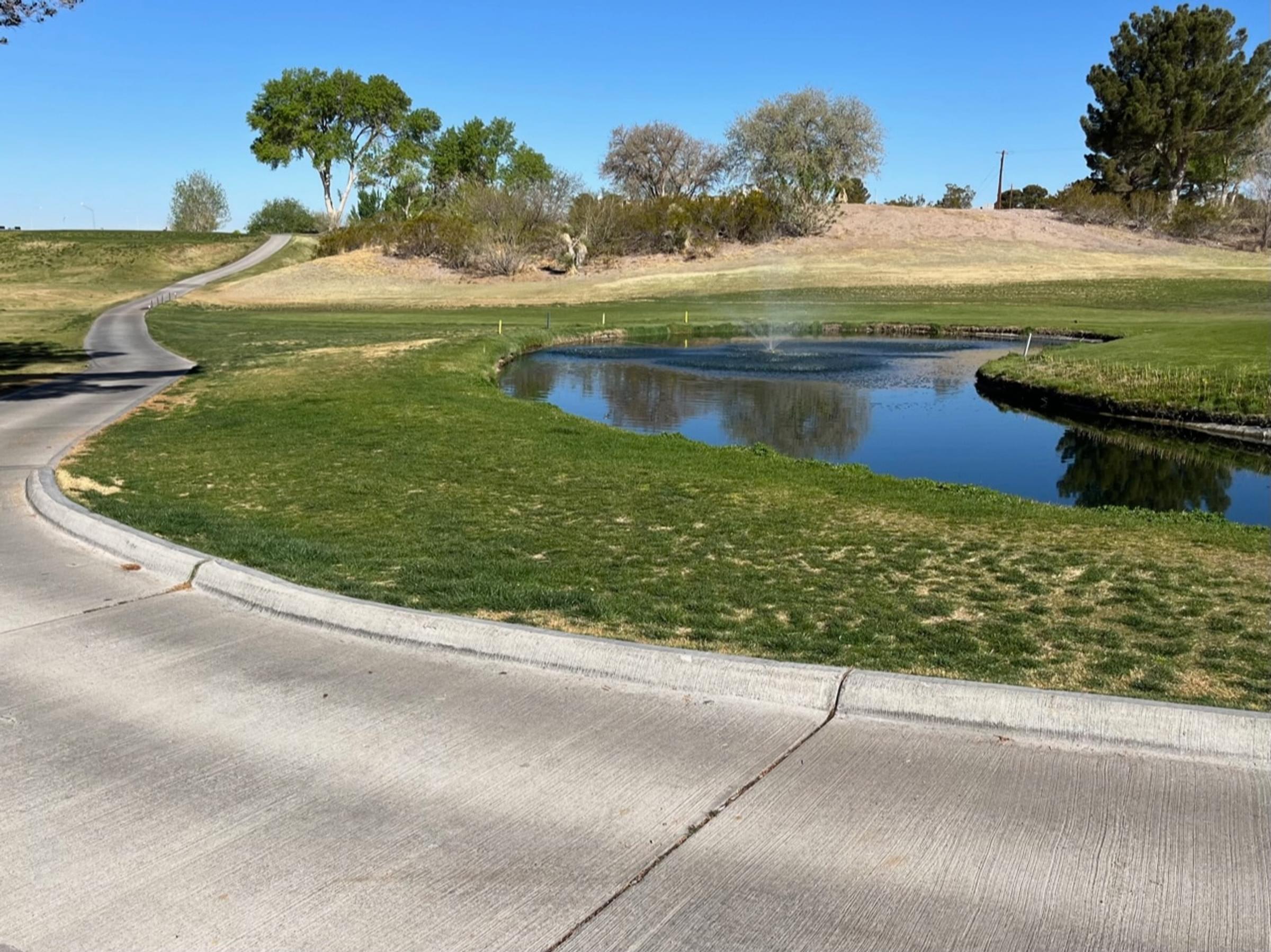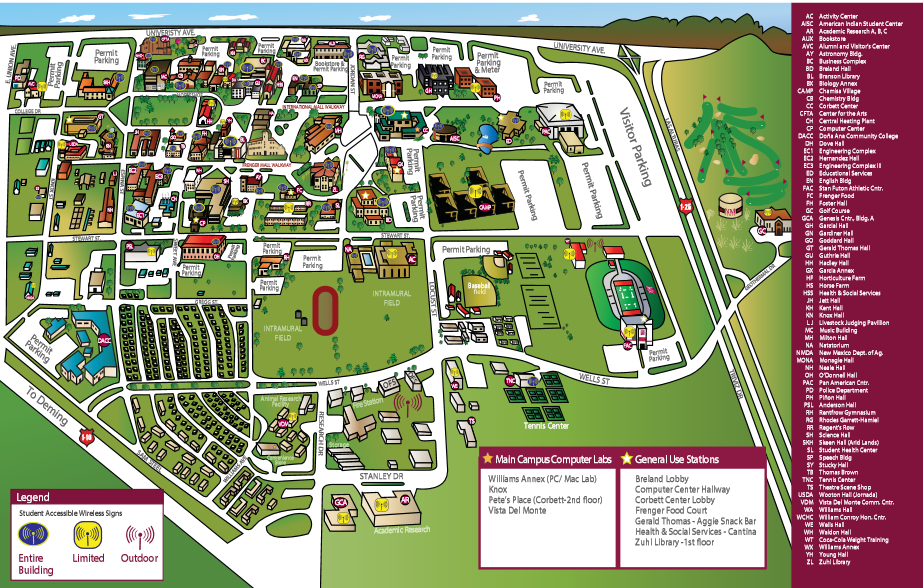NMSU--Golf Course

NMSU--Golf Course
Las Cruces, New Mexico 88003
Official WebsiteNew Mexico State University Official Website
New Mexico State University Campus map
Tips for Birding
As with most hotspots that are golf courses, birding here can be problematic. Walking on the paved cart path, let alone the greens, is prohibited if you have not paid greens fees. Unlike at many courses, this is strictly enforced by a Course Marshall, who quickly zeroes in on anyone wearing binoculars and not in a cart carrying clubs.
That is not to say that this 18-hole course can’t be birded from the clubhouse parking area, windows in the clubhouse restaurant (open to the public), or the property’s desert-vegetated edges. For example, Broad-tailed and Black-chinned Hummingbirds visit the claret cup cactus in front of the clubhouse when in bloom. Cliff Swallows nest directly over the arched entryway to the same building. A path, just outside the course area, leads northeast from the clubhouse parking lot and is used by both birders and dog walkers. Roadside birding may be conducted along Loop Drive, Geothermal Drive, and Herb Wimberly Drive leading to the clubhouse. To bird the course from the north side, park at the end of the short southern extension of Telshor Boulevard, then walk either east or west. Greater Roadrunners are often seen here, and you may be pleasantly surprised by Killdeer.
So, though you may not be able to enumerate all the Great-tailed Grackle and White-winged Dove, which are the most common birds of the course’s hundred acres, enjoyable birding is available around the course.
About this Location
The New Mexico State University Golf Course is a championship 18-hole course that is open to the public year round.
Walking on the paved paths, golf course, or greens is prohibited if you have not paid greens fees.
About New Mexico State University
See all hotspots at New Mexico State University
The main campus of New Mexico State University occupies a core of 900 acres in the city of Las Cruces. It is located adjacent to I-25, surrounded by desert landscapes and greenhouses. The main campus is also bordered by I-10, which is the main east-west interstate highway across the southern part of the United States. To the east of I-25, the campus facilities consist of the President’s residence, NMSU Golf Course, the “A” Mountain west slope, and the New Mexico Farm and Ranch Heritage Museum. South of University Avenue is Pan American Plaza, 48 acres of a horse farm, and the Fabian Garcia Science center, which houses the Chile Pepper Institute’s research, teaching and demonstration garden, algal biofuels research equipment, grape vineyards and gazebos, and fields and greenhouses for plant research projects. About six miles south of campus, on 203 acres of land, is the Leyendecker Plant Science Research Center.
The Las Cruces campus is home to a nesting population of Swainson’s hawks, a raptor species currently protected by federal law. In defense of their nest, the hawks are often mistaken for attacking pedestrians. Pedestrians are advised to be careful when walking on Stewart Street, as signs have been posted all across. Umbrellas are also being provided to students for their convenience, as well as protection from the aggressive nesting hawks.
The first master plan of the university was to create a “Horseshoe”, a U-shaped drive, in an open large lawn. At the center was Old Main, the original campus building, originally known as McFie Hall, which was destroyed by fire in 1910 (the remains are now a college landmark). The cornerstone and remains of Mcfie Hall stand near the flagpole in the middle of the Horseshoe. Today, the Horseshoe is the center of campus and is the location of the main administration building, Hadley Hall, which sits at the top of the Horseshoe, and other classroom buildings.
Features
Restrooms on site
Roadside viewing
Wheelchair accessible trail
Content from Official Website, John Montgomery, Joel Gilb, and Wikipedia
Last updated April 18, 2023
